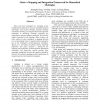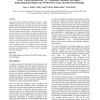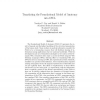7 search results - page 1 / 2 » Representing default knowledge in biomedical ontologies: app... |
BMCBI
2007
13 years 4 months ago
2007
Background: Current efforts within the biomedical ontology community focus on achieving interoperability between various biomedical ontologies that cover a range of diverse domain...
CBMS
2006
IEEE
13 years 10 months ago
2006
IEEE
More and more ontologies are emerging across bioinformatics domains to represent and define domain knowledge, such as gene ontology, anatomy ontology and disease ontology. To inte...
JBI
2006
13 years 4 months ago
2006
Domain reference ontologies represent knowledge about a particular part of the world in a way that is independent from specific objectives, through a theory of the domain. An exam...
MEDINFO
2007
13 years 5 months ago
2007
Entrez Gene (EG), Online Mendelian Inheritance in Man (OMIM) and the Gene Ontology (GO) are three complementary knowledge resources that can be used to correlate genomic data with...
WS
2008
ACM
13 years 4 months ago
2008
ACM
The Foundational Model of Anatomy (FMA) [7] represents the result of manual and disciplined modeling of the structural organization of the human body. Many workers in medical info...



